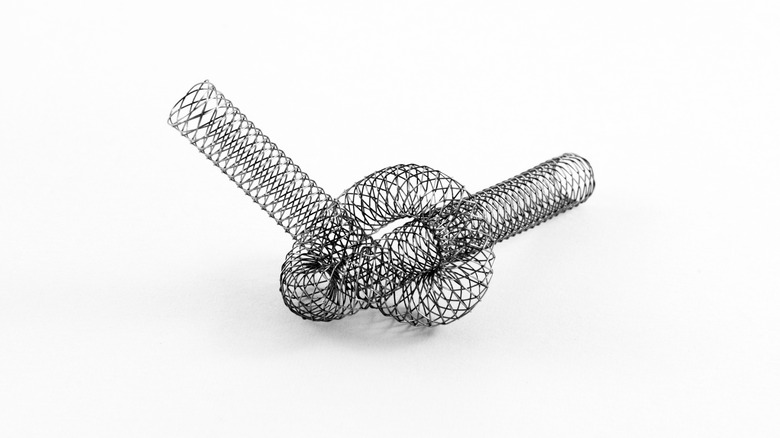The Reason NASA Needed To Reinvent The Wheel For The Mars Rover
The Mars Rover is a marvel of human innovation. Exploration in space has always relied on cutting edge technologies and unique innovations that allow for quick thinking and problem solving of issues that simply do not exist on the Earth's surface, where we live and formulate our experiences. This unique challenge forces researchers to consider better applications for things that seemed to be settled science, such as the toilet, bed, or even the wheel. When NASA sends astronauts or objects up into space they must prepare for an enormous variety of unique contingencies and potential problems.
One such issue that scientists have recently faced was in reimagining mobility for the Mars rover. Wheel design wasn't up to snuff when it came to driving the rover across the Martian surface (via NASA). Prior models that traversed the Moon and Mars have faced unique circumstances, but nothing like the demands of the newest class of rover that was being designed for missions to Mars. In the end, scientists tried a number of different options, but made a breakthrough in wheel design with the use of shape memory alloys that may just revolutionize the way humans think of movement, according to NASA.
Martian terrain and rover weight combined to provide a unique hazard
The most pressing issue faced by the Mars rover engineering team was the enormous weight of the vehicle itself. In order to deliver a vehicle fit for exploration on the red planet, engineers had to create a much more substantial unit than previous models used on the Moon and on Mars as well. For one thing, these rover tires were being designed with the intention of breaking all previous records for distance in rover capability (via NASA). This means that the rover and its wheels need to be far more durable, to increase overall weight across the unit.
Even before the new weight characteristics were factored into the design however, engineers knew they needed to reinvent the propulsion system on this explorer. Previous experiences driving on the surface of Mars made NASA engineers keenly aware of durability issues in aluminum tires. These had previously been the standard on these types of vehicles. Aluminum is a lightweight and strong material, but when stacked up against a harsh Martian environment, the wheels were shredded, rendering them totally useless. In order to take a crack at more substantial planetary exploration, an increasingly durable system of movement had to be devised (via NASA).
Shape memory alloy is a game changer for space exploration and Earth-bound applications
The solution devised to replace the frail, aluminum wheels is called shape memory alloy. Tires made of this material might not look like they're up to the task of navigating rugged celestial terrain, but the alloy has a special talent that isn't necessarily obvious to onlookers. Simply put, most matter used in everyday life is shaped through molecular, crystalline structures that can be fundamentally bent out of shape when heat or pressure is applied. Shape memory alloys are made using a unique type of metal blend called nitinol (a combination of nickel and titanium, via Science Direct), and they naturally revert back to their initial structure when energy in the form of heat or pressure is applied or removed, according to Vanderbilt University.
Nitinol has allowed for the expansion of Martian exploration, but it's also responsible for some amazing breakthroughs here on Earth. One obvious application is in upgraded standard tires. A tire made of nitinol won't be susceptible to the same kind of punctures that rubber tubes suffer, and using this metal alloy can cut down on the fabrication of rubber tires that contribute to global climate change concerns (via National Geographic). One application where it's already in use is in the field of heart surgery, according to Science Direct. Rather than inflating a newly placed stent in a patient's heart, a nitinol tube can be used as a shrunken insert that, when exposed to the precise temperature of the human body, expands to a desired width. The use of nitinol has revolutionized the field of heart surgery and made procedures far safer for patients.


